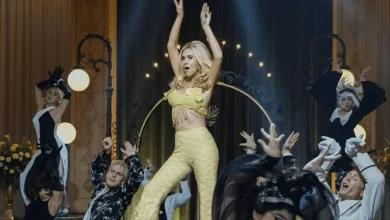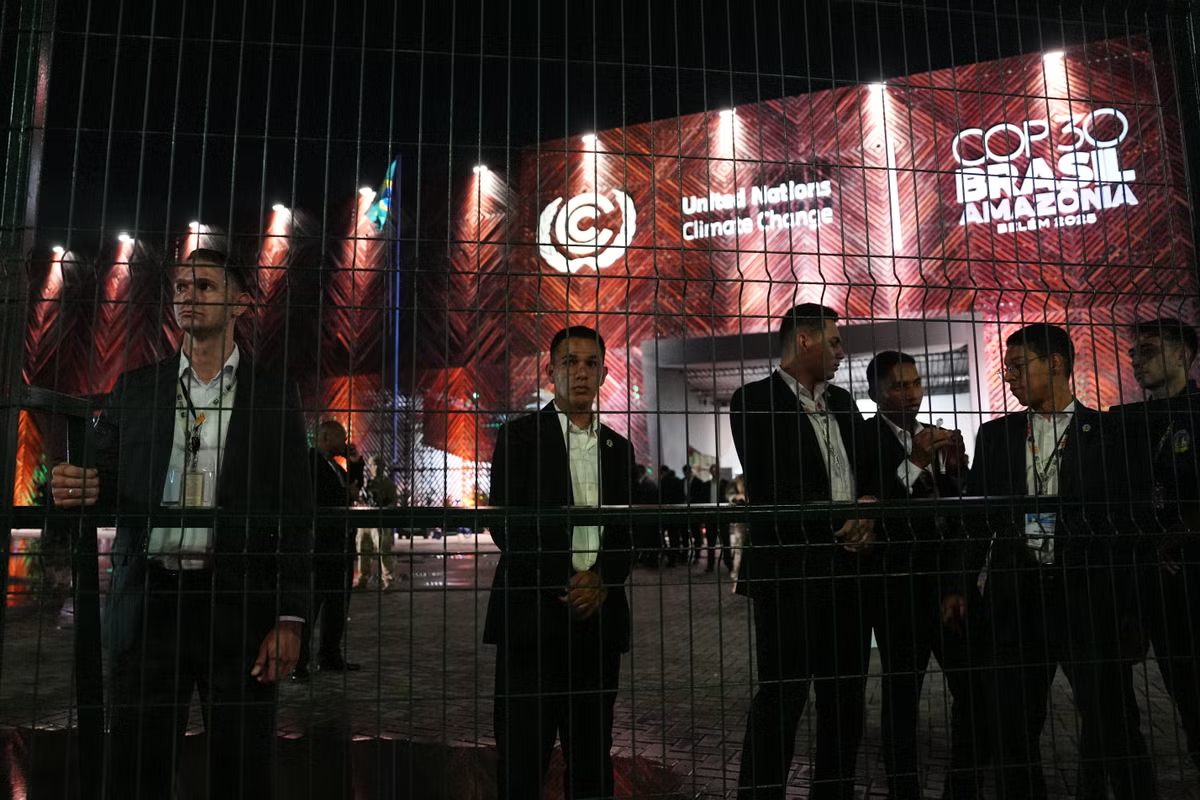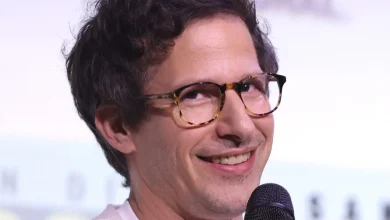Is Cristiano Ronaldo Portugal’s best attacking option for the World Cup? – The Athletic

Cristiano Ronaldo is a regular VIP at boxing and UFC events in Saudi Arabia — and his elbow on Republic of Ireland defender Dara O’Shea, which got him sent off in Dublin last week, looked UFC-inspired.
But the consequence of the first dismissal of his international career could be significant. Ronaldo’s red card, in what was Portugal’s penultimate World Cup 2026 qualifier, could see him suspended for their opening group game at the tournament next June.
Portugal more than coped in their first match without their captain and long-time talisman, demolishing Armenia 9-1 in Lisbon on Sunday to confirm their place in the finals. That was the second time in just over two years they have scored nine goals when playing without Ronaldo, having beaten Luxembourg 9-0 during the qualifiers for the 2024 European Championship, in what remains their record win.
Those two matches were against opponents Portugal would have expected to see off with or without their captain. But with the World Cup just over 200 days away, Ronaldo’s potential suspension leads to questions about whether head coach Roberto Martinez should consider dropping the now 40-year-old five-time Ballon d’Or winner from his starting XI.
Is Ronaldo still Portugal’s best attacking option, or would they fare better with him on the bench and younger legs leading the line?
It is highly likely Ronaldo, who over the summer agreed a two-year contract extension until 2027 with Saudi Pro League side Al Nassr, will be selected in Portugal’s World Cup squad for what could be his last chance to win football’s greatest prize.
Martinez has relied on him since taking charge of the national team in 2023, and in the two recent campaigns, the UEFA Nations League and World Cup qualifying, he has finished as his nation’s top scorer with 13 goals in 14 games. This included a second-half equaliser in the 2-2 Nations League final against European champions Spain in June, which Portugal won on penalties, reducing Ronaldo to tears.
But how much does he offer his team beyond the goals?
To begin, there is the experience that comes with winning more than 30 trophies with club and country, as well as leadership, having captained Portugal since 2008.
Cristiano Ronaldo shoots against the Republic of Ireland last week (Paul Faith/AFP via Getty Images)
But Father Time is undefeated. Three months short of turning 41, Ronaldo is inevitably not as physically dominating as he once was. His top speed of 31.7 km/h in that Nations League campaign was faster than 18-year-old budding Spanish superstar Lamine Yamal’s top pace of 31.5 km/h, but still outside of the top 400 speeds recorded during the competition. His Portugal team-mate Nuno Mendes had the quickest sprint of all at 36.6km/h.
Out of the 11 outfielders to play more than 700 minutes in the Nations League, Ronaldo covered the second-least amount of ground — 53.5km (33 miles) in nine appearances. Strikers typically cover less ground than midfielders and full-backs, but Norway front man Erling Haaland, for example, covered more ground than Ronaldo in 199 fewer minutes (more than two whole games) on the pitch.
For comparison, Haaland recorded a top speed of 35.4 km/h and covered 55km in 533 minutes, while Sweden striker Viktor Gyokeres, the 2024-25 Nations League’s top scorer with nine goals, reached a top speed of 33.4 km/h and ran 59.9km in 528 minutes of game time.
It is difficult to discuss the Portugal team without touching on the tragic death of Diogo Jota. In July, the Liverpool forward and his brother Andre Silva died in a car crash in northern Spain. Jota, who had represented Portugal 49 times and scored 14 goals, undoubtedly would have been part of their World Cup squad and another attacking option for Martinez.
As with his Liverpool team-mates, his death will have a profound impact on his international colleagues both on and off the field — and it is one which Martinez will have to address extremely sensitively in the build-up to the World Cup. It was a tragedy no manager would ever want to encounter.
As the squad tries to regroup and rebuild before next summer, one of the forwards — as much as it is a space in the team they would never have wanted to fill in this manner — will have to take his place.
Those who can play through the middle are 24-year-old Goncalo Ramos and Joao Felix, 26. Although Joao Felix can be used in that role, his best position is probably behind the striker, where he has been playing since joining Ronaldo at Al Nassr this summer.
Rafael Leao, 26, is one of Portugal’s most exciting forwards but has spent just 111 minutes at centre-forward for his Italian club Milan in the past two league seasons. He has played the vast majority of his football at either left-winger or left attacking-midfield. He has used Leao as a second striker in a 3-5-2 formation, but Martinez, while tactically flexible, most often sets up with one striker as part of a 4-3-3 or 4-2-3-1.
Paris Saint-Germain’s Ramos is accustomed to making an impact off the bench, as the French club’s first-choice striker is 2025 Ballon d’Or winner Ousmane Dembele. And even when the France international has been sidelined by injuries this season, Ramos has been kept out of the team on occasion by 19-year-old Senny Mayulu.
Goncalo Ramos, centre, celebrates after scoring Portugal’s second goal in the World Cup qualifier against Armenia on Sunday (Miguel Riopa/AFP via Getty Images)
But he has scored twice in three Champions League substitute appearances this season. His domestic form has not been as strong, with two goals in 12 appearances (six as a starter). When allowed to start for Portugal, he has scored eight goals and assisted twice in seven games — including when he stole headlines during the 2022 World Cup, chosen over Ronaldo to start against Switzerland in the round of 16 and bagging a hat-trick as Portugal won 6-1.
There is also the argument that Ramos is likely to be Ronaldo’s replacement once the latter does retire, so using him as a second fiddle takes away from potential international experience.
But Ronaldo’s goalscoring abilities remain at a peak level. For the past two seasons, he has been the Saudi Pro League’s top scorer, including 25 goals in 30 appearances in 2024-25. Recent winners of the World Cup have relied on a talismanic forward — you have to go back to Italy in 2006 to find a team that lifted the trophy and didn’t have one player score at least five times in the tournament.
Three of Ronaldo’s five goals in this World Cup qualifying campaign came inside the opposition’s six-yard box, and another from the penalty spot. Bruno Fernandes and Joao Neves were behind him in scoring for Portugal with three each (both got hat-tricks in that 9-1 win against Armenia), while no Portuguese player got more than two in the Nations League, where Ronaldo finished as the competition’s second-leading scorer with eight.
Ronaldo is a high-usage player. As seen in the visual below, he took 16 more shots than any other Portugal player in World Cup qualifying while registering no assists in his five games.
When he plays, most of the attacking output goes through Ronaldo; he averages 6.2 shots per game in World Cup qualifying. But if he is creating output, with a 16 per cent shot-conversion rate and five goals in five games, then ultimately he is presenting a threat.
Again, Ronaldo will be 41 when the World Cup starts, and being one of the oldest players on a pitch means you have to play smarter. Energy preservation is a part of that, timing your moment to make an impact on the game. When your team is sitting in a low block, this means being a viable counter-attacking threat, and when dominating possession, as Portugal are capable of doing against lesser opposition, it means precise movement in and around the penalty area.
In that Nations League final against Spain in June, this energy preservation was on display, as shown by Ronaldo’s heat map. He spent most of his time by the halfway line, but when a deflected Nuno Mendes cross came into the box, he was alert and used precise movement to hustle Marc Cucurella out of the way and prod the ball into the net to make it 2-2 on 61 minutes. He eventually went off injured with two minutes of the 90 to go, playing no part in the half-hour of extra time or the penalty shootout.
The Nations League final was a high in what has been a mixed bag for Ronaldo and Portugal in terms of results. Despite the national team squad often looking impressive on paper, they have failed to consistently reach the later stages of major tournaments. The furthest Ronaldo has gone at a World Cup was his first in 2006, when Portugal reached the semi-final before losing 1-0 to France. In 2022, the last World Cup, they reached the quarter-final before being shocked by Morocco. They have never reached the final.
Looking at Ronaldo’s individual record across the previous two major tournaments, he didn’t score in five matches at Euro 2024 and got just one, a penalty, in five at the 2022 World Cup. So that’s one goal, a penalty, in 10 top-level games.
However, as seen by the graph below, he has maintained a strong scoring tally into his later years. His 143 Portugal goals make him the all-time top male international scorer, ahead of Lionel Messi’s 115 for Argentina, and he has scored more goals for club and country in his thirties than in his twenties.
Generational talents playing into their forties is not uncommon in elite sport around the world, with athletes having longer careers thanks to advancements in science and technology, as well as personal discipline. NFL quarterback Tom Brady won his seventh and final Super Bowl at 43 and LeBron James, 41 next month, is still a perennial all-star in the NBA and continues to be considered one of the league’s best players.
If it was a toss-up between any other 41-year-old striker and Portugal’s other options, it might not be close. But this is Cristiano Ronaldo.





